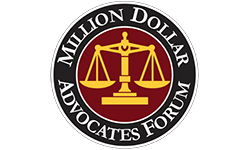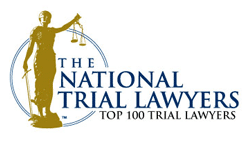Doctor’s Testimony Ruled Not Scientifically Valid in Workers’ Compensation Lawsuit Involving Mold
One of the scourges of the modern-day world is mold and the impact of exposure upon our health. In a recent court case, Maryland’s Court of Special Appeals decided that a doctor’s opinion that exposure to mold led to a raft of problems for workers in a water-damaged building was not scientifically valid under the standard presently used in the Maryland court system.
The lawsuit stemmed from complaints by several employees of the Baltimore Washington Conference of the United Methodist Church (BWCUMC) of an odor emanating from the walls. A maintenance crew investigated and discovered mold. As a result, several workers filed claims against BWCUMC and its insurer, Montgomery Mutual Insurance Company with the Maryland Workers’ Compensation Commission. The workers said they suffered from “sick building syndrome” as a result of the exposure. While some of the workers’ claims were disallowed, several were awarded partial compensation.
The workers appealed the commission’s decisions. Before trial, the insurer filed a motion asking that the testimony of Dr. Ritchie Shoemaker be excluded because his methodologies and theories on the relationship between exposure to mold and human health effects were not generally accepted in the relevant scientific community. Dr. Shoemaker is board-certified in family practice. His medical group has addressed the medical question of illness as a result of exposure in water-damaged buildings 4700 times since 1998.
The circuit court denied the motion and also decided that a Frye-Reed hearing was not needed, a decision that was reversed by the Court of Appeals. The state’s top court said the hearing should have been held and sent the case all the way back to the trial court to hold the hearing.
In Frye v. United States, 293 F. 1013 (D.C. Cir. 1923), the United States Court of Appeals for the District of Columbia reviewed the notion of general acceptance and held that “the thing from which the deduction is made must be sufficiently established to have gained general acceptance in the particular field in which it belongs.” The “general acceptance” rule was adopted by Maryland’s courts in 1978 in Reed v. Stone, 283 Md. 374. A Frye-Reed hearing is used to determine the admissibility of scientific evidence and expert scientific testimony.
The question before the trial court during the scientific evidence hearing was whether Dr. Shoemaker’s method for determining exposure to mold and theory on the connection between mold exposure and human health are generally accepted in the scientific community.
Dr. Shoemaker testified that he interviews a patient to review his or her medical history, conducts the repetitive exposure protocol and reviews the result of blood and visual contrast sensitivity tests. The doctor told the court that a patient’s symptoms can be attributed to exposure to water-damaged buildings if (1) he or she had exposure to a water-damaged building, (2) there were symptoms indicative of exposure, and (3) no confounders were present. Dr. Shoemaker said he then reviewed the blood and visual contrast sensitivity tests for several factors and if several factors are found, then the diagnosis is verified
In treating patients exposed to water-damaged buildings. Dr. Shoemaker would remove samples of mold from a person’s workplace or residence. Then, he would remove the patient from the exposure and prescribe medication. The person would remain on the medication and away from the workplace or residence for two weeks. If the symptoms disappeared, the doctor would stop the medication and order the person to stay away from the building. Dr. Shoemaker used a “differential diagnosis,” a standard technique in the diagnosis of illness and treatment of patients.
The insurer argued that repetitive exposure, blood testing and visual contrast sensitivity testing are not generally accepted in diagnosing and treating illnesses from exposure to mold.
After the hearing, the circuit court concluded that the differential diagnosis performed by Dr. Shoemaker was reliable and acceptable to establish causation. But, the state’s intermediate appellate court disagreed, reversing the trial court’s decision.
The Court of Special Appeals said that, although the methods used by Dr. Shoemaker have been recognized in scientific publications authored by the doctor; that, an abstract for an article listing the doctor as the author stated that the results of the study needed to be “tempered” because there were several study limitations. Specifically, that exposure to specific agents was not demonstrated. As a result, relying on Shoemaker’s testimony that he didn’t account for exposure amounts when conducting his differential diagnosis, the court saw similarities to a 2009 case before the Court of Appeals, Blackwell v. Wyeth, 408 Md. 575. In Blackwell, which involved allegations that vaccinations caused autism and mental retardation, the Court of Appeals found that a doctor failed to consider unknown genetics when conducting the differential diagnosis, making the doctor’s theory nothing more than conjecture.
The Court of Special Appeals also noted that, while Dr. Shoemaker, testified there were scientific publications that supported the theory that exposure to water-damaged buildings caused the injuries alleged in the lawsuit, another doctor testified there was scientific research that provided there was no association between exposure to mold and certain alleged human health effects.
“If Daubert were controlling” the Court of Special Appeals said, “we would have entertained the circuit court’s invitation to chose the clinical-medical approach to determine the admissibility of expert medical testimony as it pertains to establishing general or specific causation. However, because Maryland follows the Frye-Reed standard, and there is no consensus in the relevant scientific community that exposure to mold causes the injuries at issue here, we must conclude that the circuit court erred in its Frye-Reeddetermination.”
The federal courts and more than half of the states use the “Daubert standard” to determine the admissibility of expert scientific testimony. Frye-Reed mandates that Dr. Shoemaker’s theories regarding causation be generally accepted in the medical community, the court said. Under Daubert, the court would have determined whether Dr. Shoemaker’s theories regarding causation are reliable.
The clinical-medical approach is a second way to handle toxic tort cases such as this one.
“Thus, because there are sources that support and oppose Dr. Shoemaker’s theories and methodologies, and at least one that recognizes the relevant scientific field is undecided, we must conclude that Dr. Shoemaker’s theories and methodologies with regard to water damaged buildings, and the human health effects suffered by appellees, are not generally accepted in the relevant scientific community,” the court said.
Expert opinions, particularly in new or cutting edge areas of science and medicine are frequently challenged. There is a lag time between the science and the law, with the law lagging behind the science in terms of evidence by years in some cases.
Montgomery Mutual Insurance Company v. Josephine Chesson, et al. was released on August 29.
Belsky & Horowitz has been fighting for clients who have been the victims of negligence for many years. Call us at 410-234-0100 or email us for a free consultation and let us help you.






